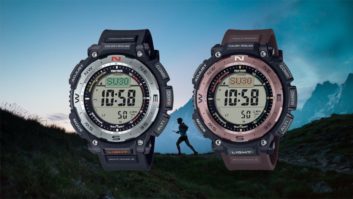Anyone selling car navigation systems or portable navigation devices (PNDs) must thank at least two people — Bill Clinton and Stanley Honey — for their roles in fostering the industry.
Stanley Honey was one of the founders of Etak(now Tele Atlas, which is part of TomTom) and he was the visionary behind the world’s first consumer-oriented car-navigation system, the Etak Navigator. The in-vehicle nav system waslaunched in 1985 in the U.S. after the company’s founding in 1983.
Having conceived the system, Honey led the engineering team that developed the final product, which was a significant achievement for its time. The system was based on an 8088 microprocessor, used 256KB of RAM, and featured a high-speed tape drive to read digital maps stored on 3.5MB tapes. It took three tapes to cover the San Francisco Bay area, with each tape including the regional highway system. A solid-state compass and wheel sensors continuously tracked distance traveled and the direction of travel.
The Navigator displayed the vehicle’s location continuously on a map appearing on an in-vehicle video monitor, which also displayed the driver’s intended destination. Voice-announced turn-by-turn driving instructions? Not a chance with the technology of that era. The Navigator showed you where you were on a map and displayed your destination. And it wasn’t always that accurate. After traveling an average of 250 miles, accumulating errors forced drivers to enter manual updates to correct their current position, as long as they knew where they were.
(Anyone out there have any memories of installing this system?)
Etak soon dropped the Navigator, but the system primed the market for next-generation navigation technology, including a Pioneer system launched in Japan in 1990. It was the first consumer car navigation systems to use CD-ROM maps and GPS satellites to fix a location. Then came DVD-based systems that stored maps of the entire U.S. on a single disc. Today, GPS systems with maps on hard drives or flash memory are commonplace.
With the GPS era in full swing, and with multiple installed in-car GPS navigation devices already on the market, President Clinton took a major step to expand the market by making car GPS systems more accurate and thus more useful. Just 10 years ago on May 1, 2000, Clinton ordered GPS satellites’ Selective Availability (SA) feature turned off for civilian applications. SA injected a so-called dithering signal, purposely designed to so that America’s enemies couldn’t use our technology against us. Previously, GPS signals in consumer applications were accurate up to 100 meters. Turning off SA made civilian GPS signals at the time accurate up to 10 or 20 meters, giving consumers confidence that they were on the road their system said they were on, not on a parallel road.
Until then, some in-vehicle nav systems got around SA by using multiple workarounds — including motion sensors, electronic compasses and dead-reckoning sensors on ABS brakes. That drove up prices and limited the most accurate systems to installed systems.
With SA turned off, the installed base of nav systems, including portable systems, delivered more accurate location information, driving up consumers’ confidence in the systems and demand — all supposedly without damaging national security. The GPS satellites, the government explained at the time, delivered far more accurate location data to the U.S. military compared to civilian users, and the government planned to develop the ability to turn off civilian GPS signals on a regional basis in combat areas while preserving peaceful uses outside those areas.
In 2007, the government announced plans to build new GPS satellites that completely lack SA.






